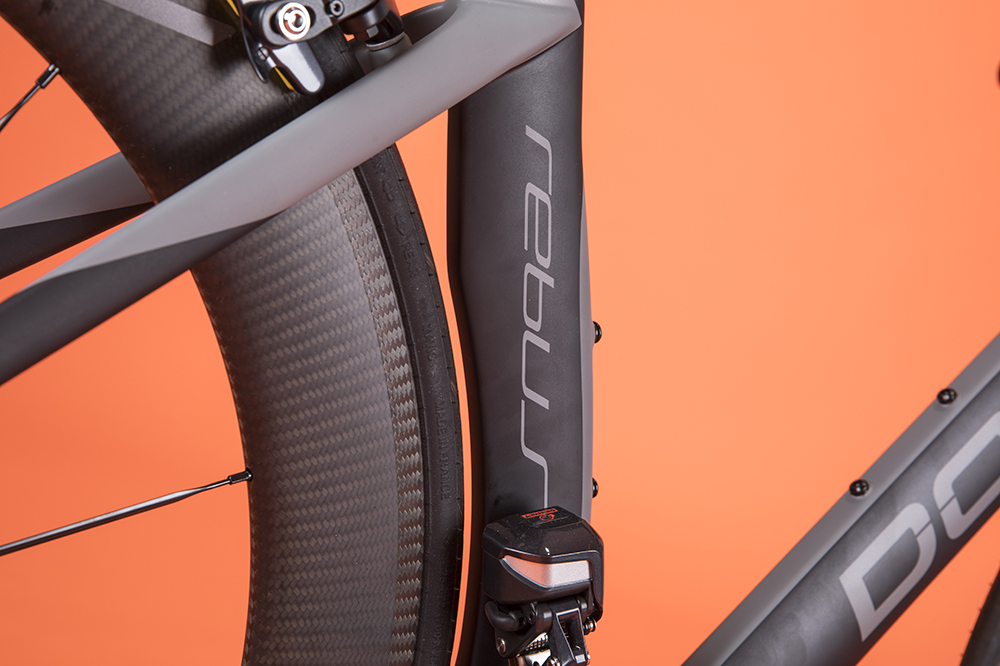Has dropping the 3:1 rule made any difference to bike design?
It’s over two years since the UCI quietly scrapped its 3:1 rule for frame tube profiles. So what’s changed since?


In 2000, the UCI implemented a series of rules governing the design parameters for bikes used in competitions sanctioned by cycling’s governing body. Amongst them were stipulations that bikes must weigh a minimum of 6.8kg, that they should not have non-structural components and that tube profiles should not exceed a ratio of 3:1 between their height and width.
The first two of these rules still stand, but the UCI quietly dropped the 3:1 rule over two years ago. Not much has changed in bike design since though. In part this reflects the lead time to develop and test new aero framesets. But are more radical road bike designs likely to appear in future?
Although the 3:1 rule is no more, the UCI still has a raft of regulations governing bikes used in competition, designed to ensure equity between teams. Rules include constraints on frame shape, which exclude machines like the Cervélo P5X triathlon bike, which lack one of the main frame tubes.
>>> 12 changes to UCI rules and regulations you need to know before the 2019 season
There is also a rule stating that tube dimensions must not exceed 8cm in height or be under 2.5cm in width, with fork blades at least 1cm wide. Another rule limits the distance between the inside edges of the dropouts. So there continue to be constraints on frame tube profiles, albeit stated in a different way from the 3:1 rule.

Early aero framesets like the Cervelo Soloist had a teardrop tube profile. Effective aerodynamics over such a shape necessitates an elongated tail, which may require tube sections of greater than 3:1 ratio to be efficient.
>>> Should the UCI relax its bike rules?
The latest race content, interviews, features, reviews and expert buying guides, direct to your inbox!
But the modern trend is to use a truncated kammtail design, in which the trailing edge of the tubes is flattened off and the aerofoil shape is completed by turbulent airflow behind the tube, while a streamlined flow of air passes around this. Such profiles have allowed manufacturers to reap aero benefits while still staying within the 3:1 rule. Trek says that its Kammtail design mimics the airflow over an aerofoil with an 8:1 aspect ratio, whilst still having an actual ratio of less than 3:1.

Wind tunnel studies have become much more sophisticated too, so that small air pressure differences between tube profiles can be measured. And Kammtails require less material than a teardrop shape, so many aero frames are now almost as light as frames with round tube profiles.
>>> Best aerobikes aero tested and rated
One company which made an early move to take advantage of the scrapping of the 3:1 rule is Basque brand Orbea. Its Orca Aero was released in July 2017. The company worked with Mondragon University to analyse and test its aerodynamics.

Orbea’s Joseba Arizaga says that the main benefits from going beyond 3:1 were in making the fork blades and the chainstays more aero; dimensional rules governing main frame tubes and the need to preserve frame rigidity meant that there was less to be gained from changes here. Orbea says that its deeper fork alone saves 4 watts or 8.4 seconds over 50km.
Industry view
I don’t think that the withdrawal of the 3:1 rule for frame and fork will change too much. The design of the frame for example is more restricted by the limitation boxes of 80 x 25mm. Even now the maximum ratio you can realize is 80:25 = 3.2:1. On the fork blades and seat stays the minimum width still is 10mm, so now you can apply profiles which are longer than 30mm, but you still have the stiffness-to-weight requirements and this is also limiting your freedom of design.
To conclude: The 3:1 rule was sort of redundant, there are still other, even more restricting rules (limitation bars), so the bicycle design won’t change too much.
Michael Adomeit, Senior Product Engineer, Canyon Bicycles GmbH
Our take
Bike design has largely moved on from teardrop tube profiles, with truncated Kammtails providing many of the same aero benefits, with lower weight and greater crosswind stability. Bicycle aerodynamics has become a lot more sophisticated over the last 20 years too.
>>> Why you should always choose an aero bike over a lightweight bike (video)
So although we’re likely to see some manufacturers push the envelope on their road bikes’ tube profiles in pursuit of marginal gains, it seems unlikely that we’ll see radical changes, particularly with the rules on tube dimensions still in place.
But manufacturers who see a large enough market in non-UCI sanctioned competitions like triathlons, will still design and build bikes with more radical profiles, both for their aerodynamic advantage and head-turning looks. And sooner or later, some of these innovations will creep into road bike design.
Paul started writing for Cycling Weekly in 2015, covering cycling tech, new bikes and product testing. Since then, he’s reviewed hundreds of bikes and thousands of other pieces of cycling equipment for the magazine and the Cycling Weekly website.
He’s been cycling for a lot longer than that though and his travels by bike have taken him all around Europe and to California. He’s been riding gravel since before gravel bikes existed too, riding a cyclocross bike through the Chilterns and along the South Downs.
